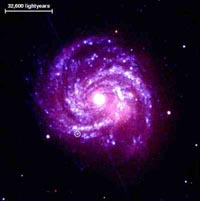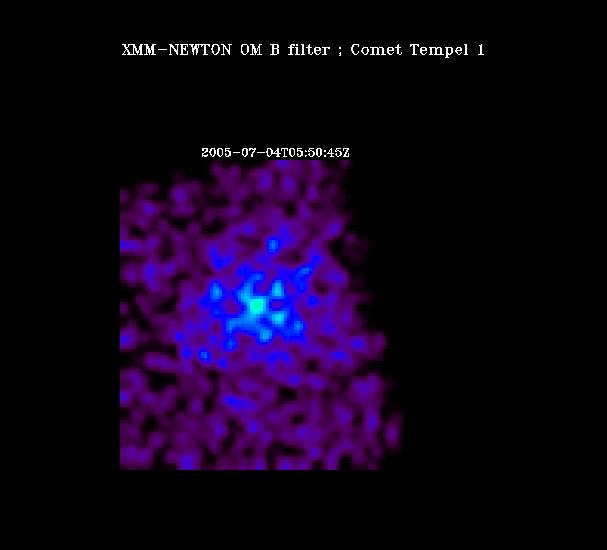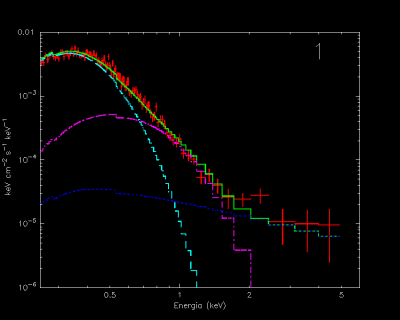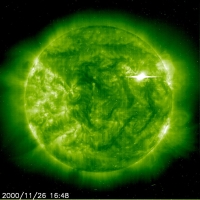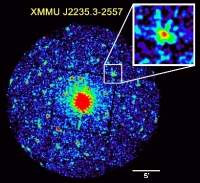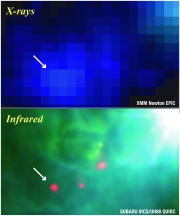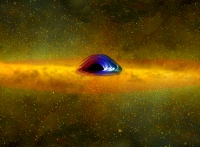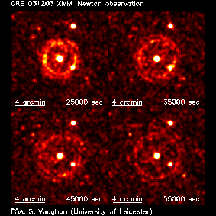| |
|
|
XMM-Newton scores 1000 top-class science results |
XMM-Newton scores 1000 top-class science results |
| |
|
|
XMM-Newton UV image of supernova in spiral galaxy M100 |
This Supernova Just Won't Fade Away
July 25, 2005 - Scientists have found that a star that exploded in 1979 is as bright today in X-ray light as it was when it was discovered years ago, a surprise finding because such objects usually fade significantly after only a few months. |
| |
|
| First
XMM-Newton images of impact July 4, 2005 - Images of Comet 9P/Tempel 1 taken by the Optical Monitor on ESA's XMM-Newton observatory, from two minutes before impact and until seven minutes after impact. |
|
| |
|
|
|
Hot spots
on neutron stars April 22, 2005 -
Hot spots on neutron stars: |
| |
|
|
|
Jupiter: A cloudy mirror for the Sun? March 7, 2005 - Astronomers using
the European Space Agency's XMM-Newton telescope have discovered
that observing the giant planet Jupiter may actually give them an
insight in to solar activity on the far side of the Sun! In research
reported in the most recent edition of Geophysical Research Letters,
they discovered that Jupiter's x-ray glow is due to x-rays from
the Sun being reflected back off the planet's atmosphere. |
| |
|
|
|
Distant Galaxies Show a
Young Universe March 2, 2005 - Using ESA's X-ray
observatory XMM-Newton and the European Southern Observatory's Very
Large Telescope, scientists have discovered the most distant massive
structure in the Universe. The data reveal a cluster of hundreds
of galaxies already in place when the Universe was only a third
of its present age. This discovery suggests that the Universe's
hierarchal structure of stars, galaxies and clusters formed quickly
after the big bang, much earlier than astronomers thought. |
| |
|
|
|
Newly Seen Force May Help
Gravity in Star Formation March 1, 2005 - Scientists have
pierced through a dusty stellar nursery to capture the earliest
and most detailed view of a collapsing gas cloud turning into a
star, analogous to a baby's first ultrasound. |
| |
|
|
|
Black Holes in a radar trap February 23, 2005 - Using the
X-ray Satellite XMM-Newton researchers measure velocities near the
speed of light in the vicinity of cosmic mass monsters. |
| |
|
An artist's concept of XMM-Newton |
Science News Release 1-2005 January 10, 2005 - Scientists have observed three separate clumps of hot iron gas orbiting around a black hole at 30 000 kilometers per second, about a tenth of the speed of light.
|
| XMM-Newton has had a successful five years.
December 10, 2004 Read More >> |
|
| |
|
|
4 panel picture of galactic halo |
Dazzling Halos Illuminate Our Dusty
Galaxy January 26, 2004 - The discovery
of a unique phenomenon: a beautiful set of expanding X-ray halos
surrounding a gamma-ray burst which have never been seen before,
has been announced by an international team of astronomers led by
Dr Simon Vaughan of the University of Leicester. The research has
been accepted for publication in the Astrophysical Journal. |
|
|
|

